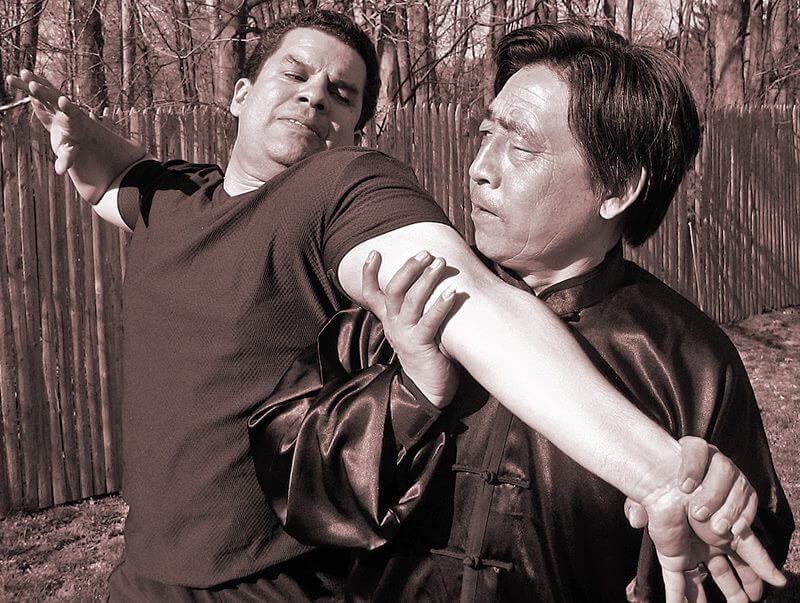Big Bash League, the T20 League of Australia will see some changes starting from the upcoming season. But the changes announced by Cricket Australia for the upcoming season have received a lukewarm welcome. But are these changes necessary to the game, asks Vijayhardik. An exclusive for Different Truths.

The Big Bash League (BBL), Australia’s T20 league, released a new set of rules on Monday for its upcoming season. The new rules tweaked the powerplay system, substitutions, and points system to make the game more exciting. While there is excitement about it, some have questioned the need for changes to the current rules of the format.
The Big Bash League (BBL), Australia’s T20 league, released a new set of rules on Monday for its upcoming season. The new rules tweaked the powerplay system, substitutions, and points system to make the game more exciting. While there is excitement about it, some have questioned the need for changes to the current rules of the format.
The shortest format of the game, 20 overs a side, popularly known as the T20 format. The International Cricket Council (ICC) is giving special consideration to the format. All associate nations under the rules framework of the ICC have been accorded the status of a full member for the T20 format.
What started to draw back crowds to cricket stadiums in England has bloomed into a format of cricket for the millennials. Prior to the inaugural edition of the T20 World Cup in 2007, T20 was not much of a phenomenon. Since its inception in 2005, between Australia and New Zealand, there were just 10 T20 international games played.
Many nations were apprehensive of adopting the format. There were criticisms regarding the format that spoke on how it would affect the game. Critics were of the opinion the format did not require players to have the skill as it was more of a swing and miss kind of game.
Many nations were apprehensive of adopting the format. There were criticisms regarding the format that spoke on how it would affect the game. Critics were of the opinion the format did not require players to have the skill as it was more of a swing and miss kind of game. Former players were worried about the impact it would have on Test cricket.
The first T20 World Cup changed that. The cricket audience world over got to have the T20 experience. They experienced the thrill, the excitement, and the tension. It got their adrenaline pumping. People were discovering how they fit easily into their jam-packed schedules and fast-paced lifestyle.
This was also the time cricket fans and lovers were acquainting themselves with the rules associated with the format. In a 20 over game, the limit for each bowler was capped to four overs. The powerplay, at the beginning of the match, a phase where the bowling side is allowed only two fielders outside the 30-yard circle, lasted for 6 overs.
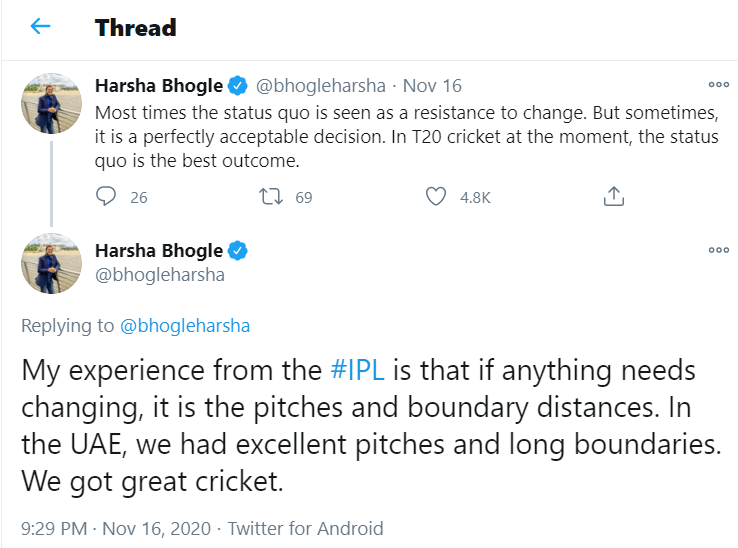
This was also the time cricket fans and lovers were acquainting themselves with the rules associated with the format. In a 20 over game, the limit for each bowler was capped to four overs. The powerplay, at the beginning of the match, a phase where the bowling side is allowed only two fielders outside the 30-yard circle, lasted for 6 overs. Cheerleading squads made an entry into cricket.
Keeping in line with the rules at the time with limited over games, the team batting had an opportunity post the 14th over to have a 4 over powerplay. This time there were three fielders allowed outside the circle. It was like the batting powerplay, a 5 over period of play, available to the batting team in a One-Day International post the 15th over.
Post the 2007 T20 World Cup, which India won, the powerplay to the batting team was done away with. The next year the Board of Control for Cricket in India (BCCI) launched the Indian Premier League (IPL) with much fanfare. It changed the cricket scenario in India and around the world.
Post the 2007 T20 World Cup, which India won, the powerplay to the batting team was done away with. The next year the Board of Control for Cricket in India (BCCI) launched the Indian Premier League (IPL) with much fanfare.
The success of the Indian Premier League saw various T20 leagues popping up across the globe. Franchise cricket had taken birth. Players were plying their trade in various countries and different continents. This brought in money to game and provided for the players. Domestic players had better cricketing career opportunities.
Post a few hiccups and as the format began to settle in, the players and teams adapted to the format. The basics of the game started to come into play. Innings were being constructed though runs were being scored at a faster rate. The rules of the format too settled down.
There was the powerplay, which became the norm. The first six overs were meant for the batting team to capitalize on the field restrictions while the bowlers had the opportunity with the new ball. The additional powerplay was removed. In case of a tie, the result of the match would be settled by a super over. Unlike the bowl out that happened in the India-Pakistan game in the league stage in the 2007 World Cup.
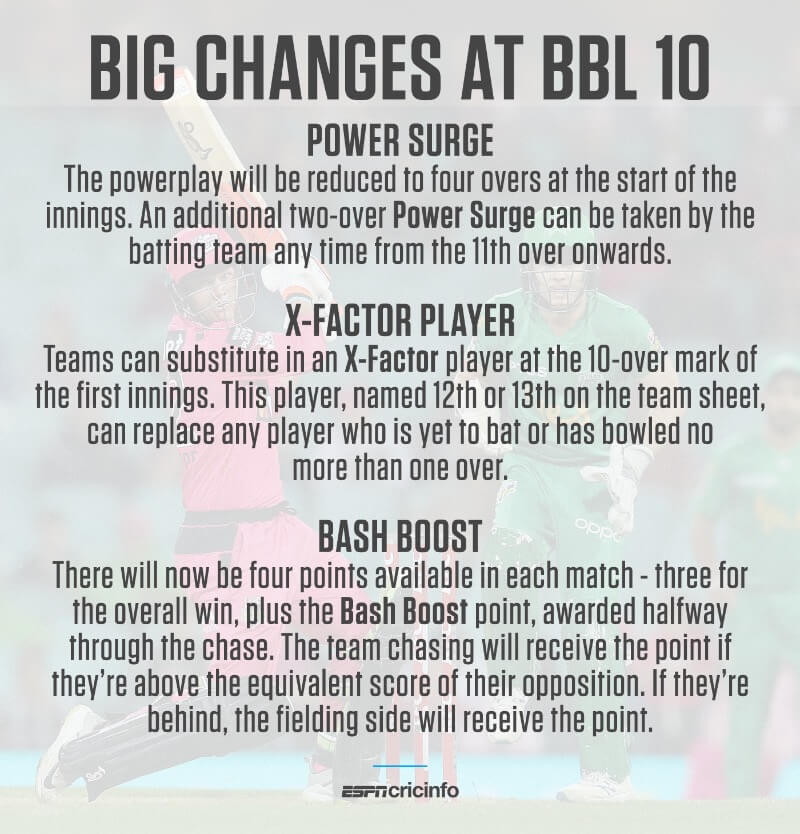
To jazz it up a notch, the T20 leagues had their little additions but the structure of the game how it was played in the 20 overs remained the same. The time-outs in the IPL are unique to it. The Big Bash allows a lesser number of foreign players in the team/squad than the IPL.
To jazz it up a notch, the T20 leagues had their little additions but the structure of the game how it was played in the 20 overs remained the same. The time-outs in the IPL are unique to it. The Big Bash allows a lesser number of foreign players in the team/squad than the IPL. Apart from such differences, the format in which the game was played in international games and at the league level was the same.
The new tweaks proposed by Cricket Australia (CA) for the Big Bash League change the structure of the game, the way it is played. The three changes proposed by CA are termed as ‘Power Surge’, ‘X-Factor Player’ and ‘Bash Boost’.
Power Surge:
It is two overs of field restrictions with the exact rules of the powerplay that is curtailed to 4 overs, available to the batting side after the 11th over of the innings.
The logic behind this is to provide teams to accelerate mid-innings.
The batting powerplay too had the same idea in the context of the ODI. It ended up being a double-edged sword. Teams often lost wickets trying to score fast runs. The ‘Power Surge’ could have the same effect in the BBL.
The batting powerplay too had the same idea in the context of the ODI. It ended up being a double-edged sword. Teams often lost wickets trying to score fast runs. The ‘Power Surge’ could have the same effect in the BBL.
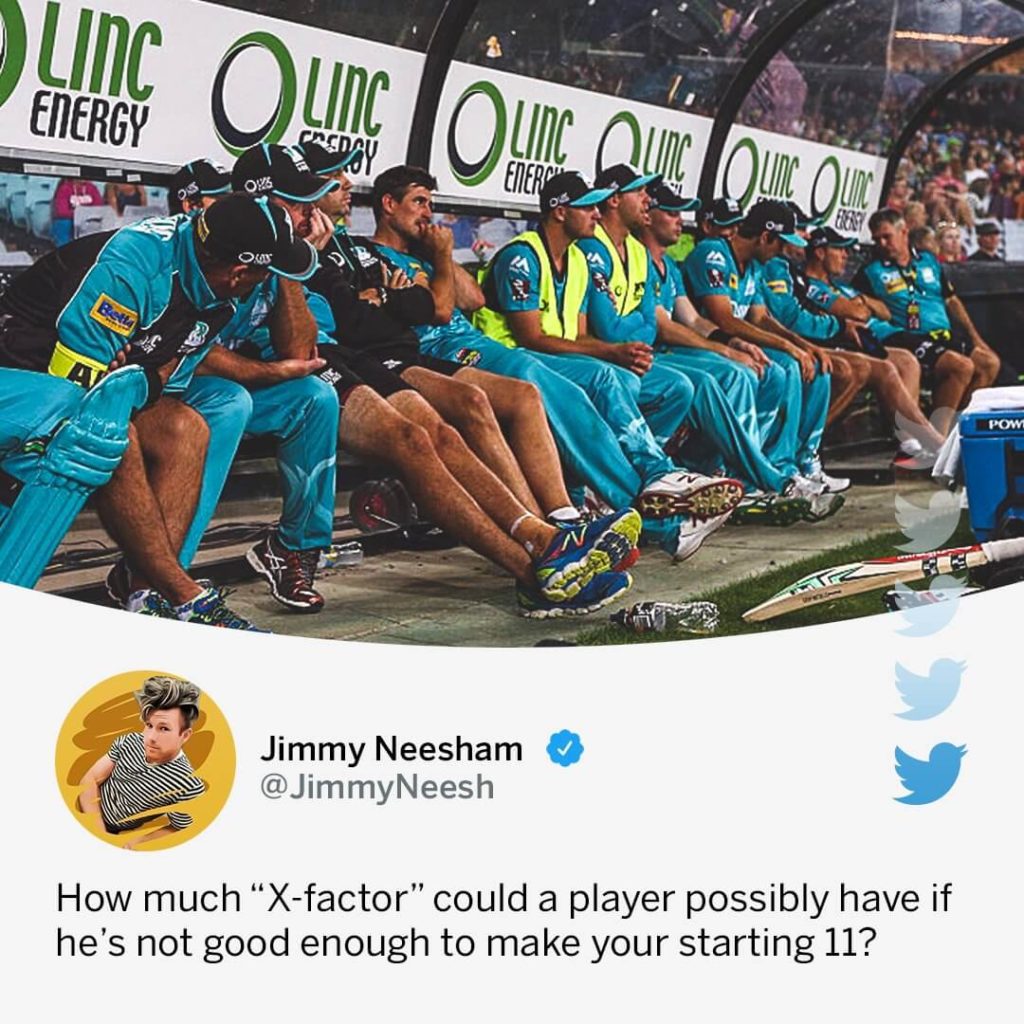
X-Factor Player:
Borrowing the concept of a substitute from football, Cricket Australia has introduced the concept of an X-Factor Player.
Listed on the team sheet as the 12th or 13th player, the player can substitute batsmen or bowler post the 10th over in an innings. The player can replace a batsman who has not had the chance to bat or a bowler who has bowled only a single over.
Listed on the team sheet as the 12th or 13th player, the player can substitute a batsmen or bowler post the 10th over in an innings. The player can replace a batsman who has not had the chance to bat or a bowler who has bowled only a single over.
Bash Boost:
The Bash Boost is similar to a bonus point. It is to be awarded towards the latter half of the second innings. The scores at the 10 over mark will decide which team will be awarded the point. So, the point can either be won by the winning or the losing team.
The boost will be decided by a comparison of the scores of the teams at the 10 over mark. If the team batting has a higher score than the bowling side, they get the point. If their score is less than the score of the bowling team, the team bowling gets the point.
Cricket Australia might have its own reasons for tweaking the rules for their T20 league. The new rules have been received with a mixed response. The current structure of the T20 format has enough excitement and brings in the audience.
Cricket Australia might have its own reasons for tweaking the rules for their T20 league. The new rules have been received with a mixed response. The current structure of the T20 format has enough excitement and brings in the audience.
I do not believe the current change of rules will make the game a much even battle between the bat and the ball. Experts and critics have opined that instead of changing the rules, its condition of pitches and sizes of boundaries that need to be changed. The current season of the IPL has proved that as the season progressed.
Will the change in rules make for a more exciting season of Big Bash League? Will we see a much more of a contest between bat and ball? Let us wait for the current season of the Big bash to unfold to find our answers.
Links for pictures:
https://twitter.com/bhogleharsha/status/1328366987219664896 (Screenshot 495)
https://twitter.com/ESPNcricinfo/status/1328253940618543104/photo/1 (X-factor)
https://twitter.com/ESPNcricinfo/status/1328097096495484928 (Changes to BBL)
https://twitter.com/ArunPandey99/status/1176507952640847872/photo/1 (India 2007 World Cup)
Visuals sourced by the author from the Internet


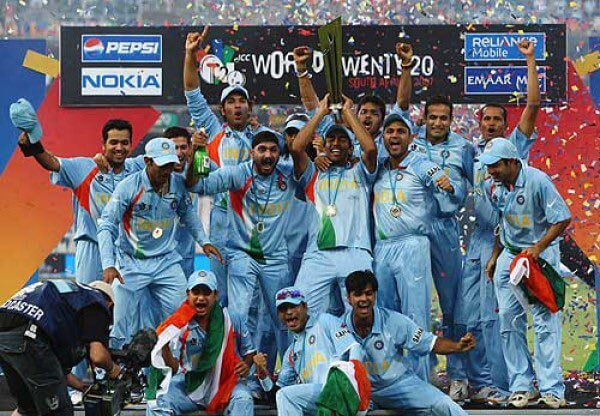



 By
By